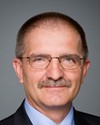Thank you, Mr. Chair.
I want to go back to a basic calculation. First, I want to be certain I heard correctly. The idea is that a $1 million investment produces a $5 million return. That is in fact the ratio you suggested a moment ago, Mr. Moore? For $1 million in investment, there is a $5 million return.
Let's take geomatics as equivalent, and correct me if the comparison is too poor. When I had my small business in the service industry, if someone had given me $1 for each $5 that I brought in to help me do my market study, I would have been in heaven.
How should the 1:5 ratio be seen as an achievement, as being the right thing to do? I would like to hear your explanation of this.
I have another quick question for you, Mr. Moore. How is your role in relation to geomapping different from the role of the Department of Natural Resources? How are you different and complementary?
I would like to get some clarification from you, Mr. Ferguson. You seem to be critical of the fact that there is no Canadian geomapping plan. You associate that in part with problems for Canadian sovereignty. I have not completely made the connection and I would like to understand that better. Can you help me see what the relationship is between Canadian sovereignty and the lack of a Canadian geomapping plan?
Thank you.




